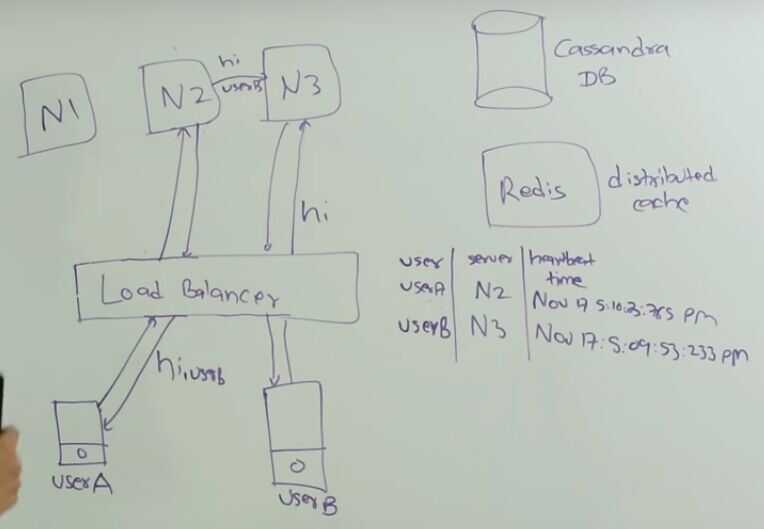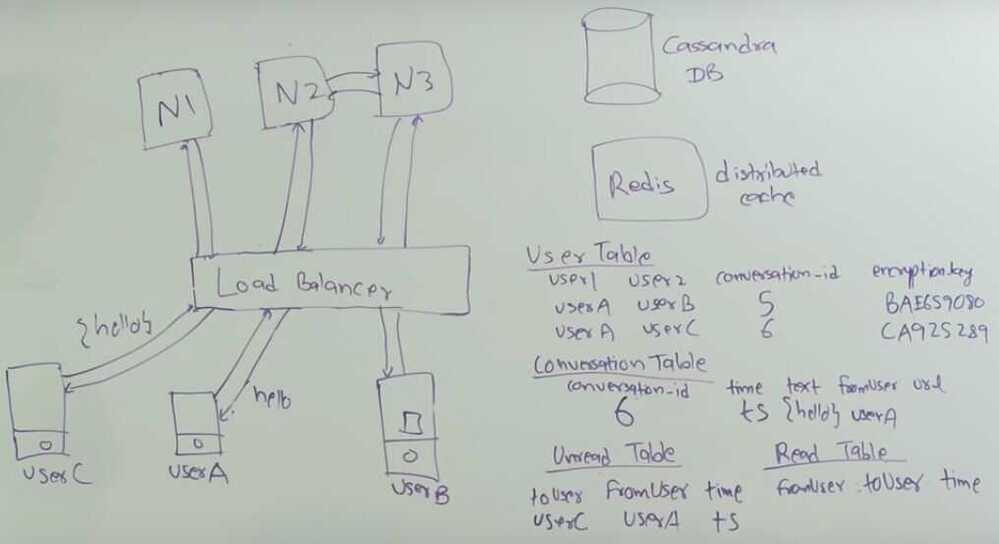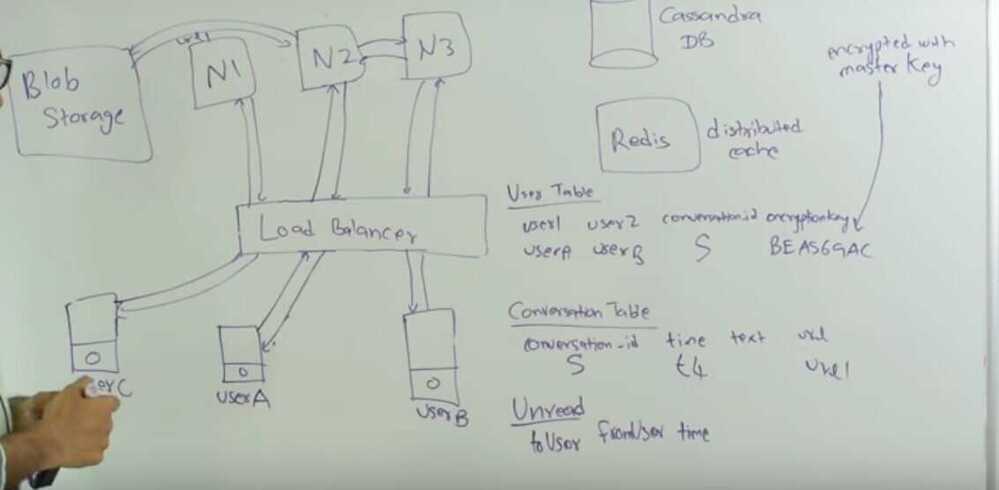System Design - Messenger / WhatsApp
System Design : Design messaging/chat service like Facebook Messenger or Whatsapp
System Design: Messenger service like Whatsapp or WeChat - Interview Question
WhatsApp tech stack
- variant of XMPP for signaling.
- Opus voice codec, but in 16Khz
- Opus/SILK audio codec and NAT (Network Address Translation) techniques. The STUN server and Peer to Peer connection are the key elements included to boost and maintain authentication to the users.
- WhatsApp is using the PJSIP library to implement Voice over IP (VoIP) functionality. The captures shows no signs of DTLS, which suggests the use of SDES encryption (see here for Victor's past post on this). Even though STUN is used, the binding requests do not contain ICE-specific attributes. RTP and RTCP are multiplexed on the same port.
https://webrtchacks.com/whats-up-with-whatsapp-and-webrtc
Design a Messaging Service
- Messaging
- One to one message
- Group message
- Broadcast message- Timeline
- Sharing
- text / stickers
- image / gifs
- video
- status (text / image / video)- Delivery
- Sent notification
- Delivered notification
- Read notification (can be sent like a regular message [like an acknowledgement])
- Push notifications
- Only delivering, because there cannot be interaction with the message
- Uses GCM- Backup
- Local
- Cloud
- Storage
- Store messages
- Store analytics
- Send and delete
- Network
- Ephermeral
- TCP - Handshake
- Load balancing (layers of load balancing and caching)
- Scaling
- Horizontally
- Messages can be delivered out of order because different messages can be used to handle message requests.
- Caching
- Database
- storing logs
- analytics data
- history
- Database replication
- Database sharding
- Queuing
- Messages Queue
- Security
- End to end encryption
- How to monetize the application
- sell stickers, emojis
- permium services
Two Types of Chatting
Facebook -
- Keep all the messages
- Can read the message if end to end encryption is not turned on
WhatsApp / Signal -
- only keeps the messages till the receiver doesn't receive the message, then delete it
- End to end encryption enabled, cannot read messages
Facebook Messengers
Features -
- One to one chatting
- Online / Sent / Read
- Sending pictures or other files
- Database
- Security User talks to Load Balancer (which can operate at Level-3, Level-4 or Level-7)
Load Balancer then talks to one of the node servers
Networking - HTTP, WebSockets
- User will login using username and password at that time server will know that user is online
- User A will send request to a load balancer, Load balancer will redirect the request to one of the hosts using FIFO or number of connections or load average of these hosts.
- Bidirectional connection is needed for heartbeat
- We store all the data of heartbeat in in-memory cache i.e. redis
- Using the last heartbeat user can know when a user was last online (like 45 mins ago)
- All the messages will be stored in Cassandra DB
- If user is not online then text message will be stored in unread table

Sending messages when user is offline

Sending Images
- Use thumbnail to send image
- Save into blob storage and pass down url

Optimizations
- Persisting messages
- Convert old data messages to blob structure and save it in blob storage
- Search everytime someone searches
- Since, search is very expensive and done so rarely
- Group Table for group chat